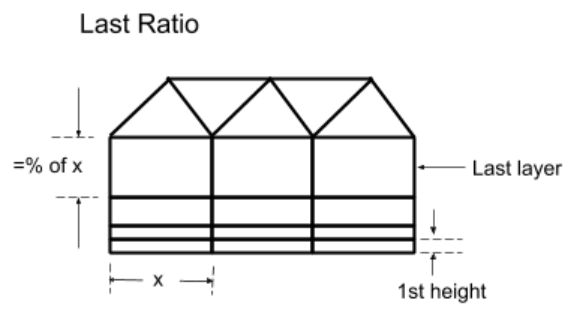When beta features are enabled, the Fault-tolerant Meshing guided workflow's Create Component Meshes task includes an additional Type when creating component meshes. Use the Grow Prisms option to create a component mesh by growing a boundary layer (prism layer) around one or more selected objects from the imported geometry.
When the Type is set to Grow Prisms, additional settings are required:
Choose an Offset Method Type. The offset method that you choose determines how the mesh cells closest to the boundary are generated. Choices include:
aspect-ratio: allows you to control the aspect ratio of the boundary layer cells (or prism cells) that are extruded from the base boundary zone. The aspect ratio is defined as the ratio of the prism base length to the prism layer height.

last-ratio: allows you to control the aspect ratio of the boundary layer cells (or prism cells) that are extruded from the base boundary zone. You can specify First Height for the first prism layer.

uniform: allows you to generate every new node (child) to be initially the same distance away from its parent node (that is, the corresponding node on the previous layer, from which the direction vector is pointing).

Specify the Number of Layers. This value determines the maximum number of boundary layers to be created in the mesh.
If the Offset Method Type is set to uniform, specify the First Height. This value is the height of the first layer of cells in the boundary layer.
If the Offset Method Type is set to aspect-ratio, specify the Aspect Ratio. You can control the heights of the inflation layers by defining the aspect ratio of the inflations that are extruded from the inflation base. The aspect ratio is defined as the ratio of the local inflation base size to the inflation layer height.
If the Offset Method Type is not set to last-ratio, provide the Growth Rate. This value determines the relative thickness of adjacent inflation layers. As you move away from the face to which the inflation control is applied, each successive layer is approximately one growth rate factor thicker than the previous one.
Additionally, you can provide a value for the Last Ratio Percentage.


